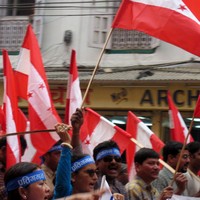Less than a month after Nepal’s Constituent Assembly was dissolved following its failure to draft a new constitution despite three extensions, the country’s largest and ruling Maoist party split this week. Discord and delay have characterized the country’s ongoing peace process since the signing of the Comprehensive Peace Accord between the government and Maoist rebels in November 2006. They have now led to a political crisis that has disillusioned citizens and made neighboring India and China edgy.
The split in the Unified Communist Party of Nepal-Maoist is expected to exacerbate Nepal’s already bumpy transition from a Hindu monarchy to a democracy. While interparty disagreements on whether Nepal should adopt an ethnic federalism and keep its parliamentary system of government resulted in the dissolution of the constituent assembly on May 28, the Maoist split now reveals faultlines within the ruling party.
Moreover, according to Rajan Pokhrel, a journalist with the Himalayan Times, the new Maoist splinter faction comprises the party’s radical sections, raising fears of renewed anarchy of the kind last seen during the country’s 10-year civil war, which claimed more than 16,000 lives.

